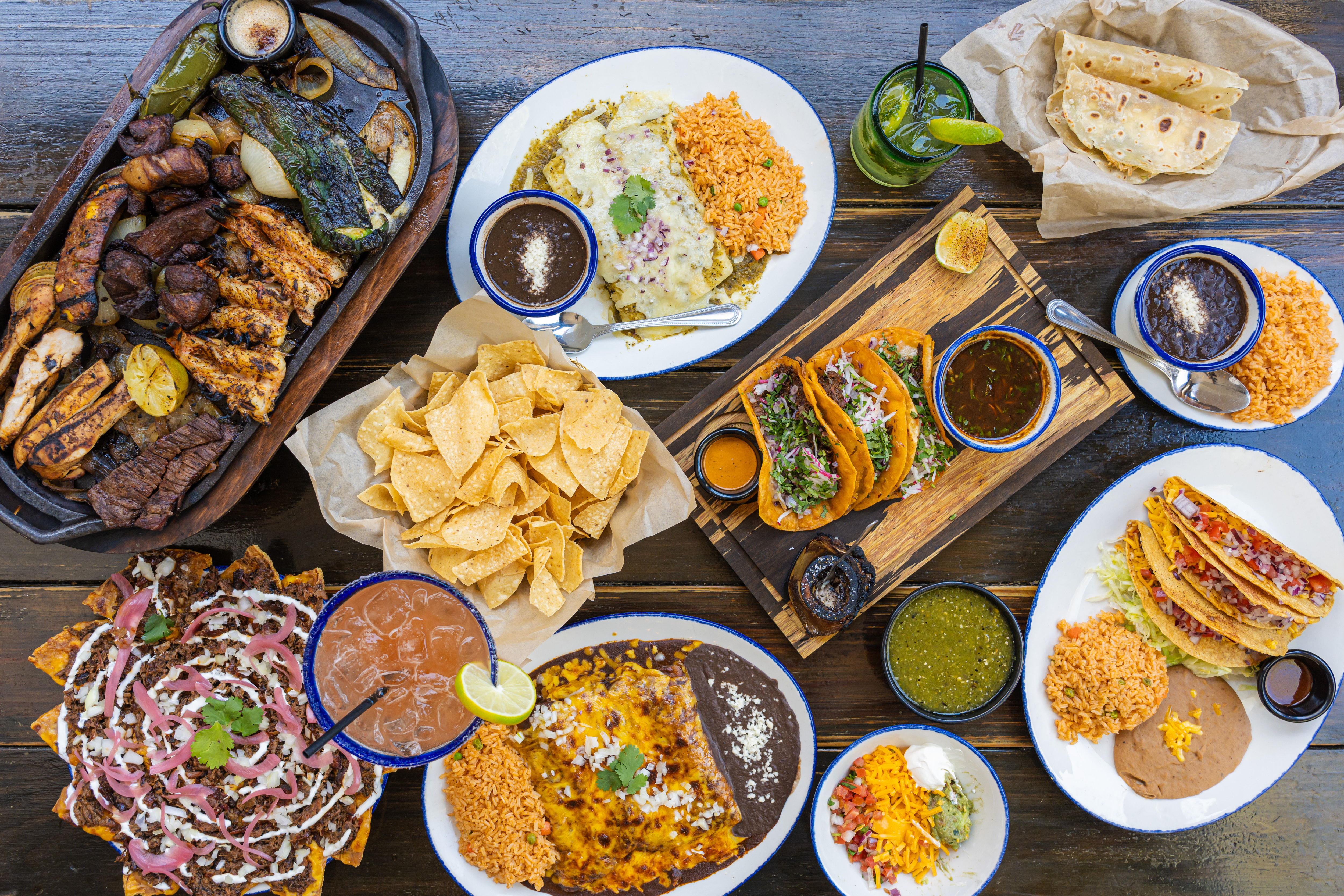A Vermonter Discovers Houston Food
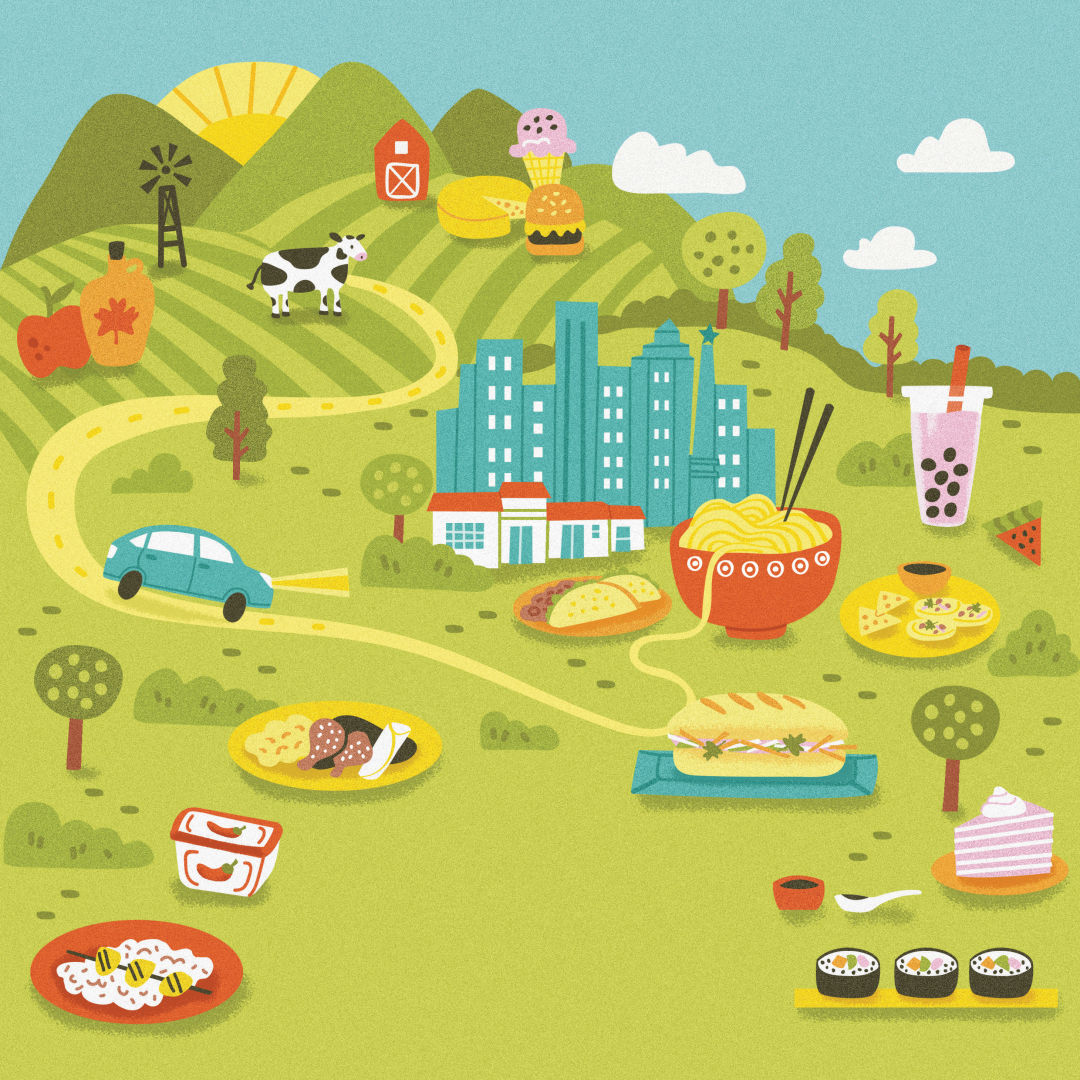
Image: Rhianna Wurman
My Vermont license plate was "BULGOGI." In the plate’s eight-year lifespan, two people properly identified it, both well-known food writers. The rest who were curious enough to inquire wanted to know if it meant I had a bulldog.
But their ignorance could be forgiven: The only two places in the entire state that served Korean food were two-and-a-half hours apart and not very good. And forget about cook-it-yourself barbecue, which gives bulgogi—delicious, marinated, thin-cut beef—its name, a literal translation of “fire meat.” For that, I had to travel a minimum of an hour and a half to Montreal.
Is it any wonder that, after 17 years, I was dying to get out? As much as I liked my job of seven years at Seven Days, Vermont’s statewide alternative newsweekly, it was frustrating to pin a career in food journalism on a state with fewer than 1,400 dining establishments. That number, of course, includes gas stations and movie theaters—anywhere people are watered or fed. The tally of restaurants worth trying and potentially covering is far lower, and separated by three hours of mountains.
In November 2015, I was offered the job of dining editor and critic at Houstonia magazine. I took it sight unseen, spending less than 24 hours in Houston—during which I learned of the existence of chili gravy—before moving here. In the process, I left behind my Vermont readership, most of my possessions, and, ultimately, my 12-year relationship.
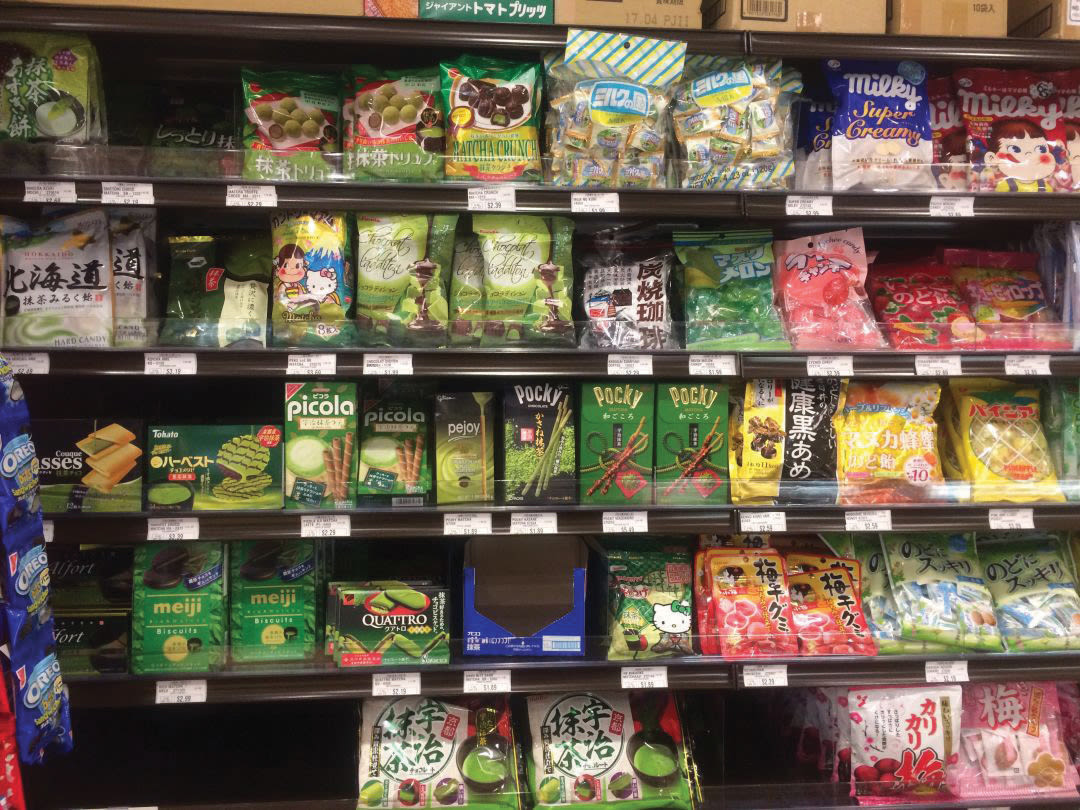
Matcha candy at Seiwa Market
Image: Alice Levitt
But I had to. When I arrived in Mutt City, I was greeted by a metropolitan area crammed with 12,339 restaurants, almost 10 times what I’d been dealing with in the entire state of Vermont. According to analysts, Houston had seen a 2 percent increase from the year before, bucking the downward nationwide trend. In fact, I’d written a feature for Seven Days just two months before moving away, about a rash of closures that only continued after my departure.
I sold my car the day before I hopped my one-way flight to Houston. The next morning, I caught an Uber to Carmax, bought a Prius—essential for a journalist covering a lot of ground, but impossible in snowy, muddy, mountainous Vermont—and headed to Little India. I knew what had been missing in my life, and it was Desi buffets. Lots of them. And chaat. And places to buy my favorite toothpaste, fennel-scented Dabur Meswak.
I had entered Willy Wonka’s factory. My experience was different from Augustus Gloop’s, though. As soon as I arrived at the Houstonia house, the celebration of my gluttony commenced. My inbox was crammed with invitations to tastings and multicourse feasts. But the sorts of restaurants that can afford publicity or marketing are not the reason I came to Houston. The fun isn’t in someone sending me a press release about something cool and new; it’s in discovering it myself.
On one of my first days in Houston, I tried out breakfast-and-lunch-only Puebla’s Mexican Kitchen & Bakery on North Main, which still has one of the best moles I’ve sampled in town. I made it a regular ritual to go to the AMC 30 on Dunvale to watch Asian movies not being shown elsewhere, which is how I encountered the nearby Al Aseel Grill & Café and its incomparable Palestinian-Jordanian fried-chicken feast. Mall-walking at the Galleria, I discovered watermelon-juice bubble tea with teddy bear–shaped lychee jelly at the Teahouse.
Also new: solo exploration. If that sounds vaguely naughty, perhaps it is. This was eating, but also living just for myself for the first time in my life. Want to get stuffed at a new friend’s Thanksgiving, then spend the late afternoon exploring Dun Huang Plaza in Chinatown, munching on taro layer cake all the way? Do it. How about spending Christmas Eve practicing your Spanish at a tortillería, then binging on kebabs at a Lebanese restaurant, after a marathon session at the Museum of Natural Science? This is how I spent my first holiday season in Houston, and I was feeling the spirit for the first time in my life.
Almost two years in, it’s not uncommon for me to wake up on a weekend and feel like spending some time driving around Cypress or Katy, which Inner Loopers tell me is all but unheard of. Call it Vermont grit, but for years, my mother had to drive 45 minutes just to get to the supermarket. Traveling half an hour for a good meal and outlet shopping seems very reasonable to me, and anyway, I know that in the process, I’ll discover something new, like Nyam Nyam Café, the exceptional Russian-owned crêperie I came across when I first headed to Houston Premium Outlets all the way out on the Grand Parkway.
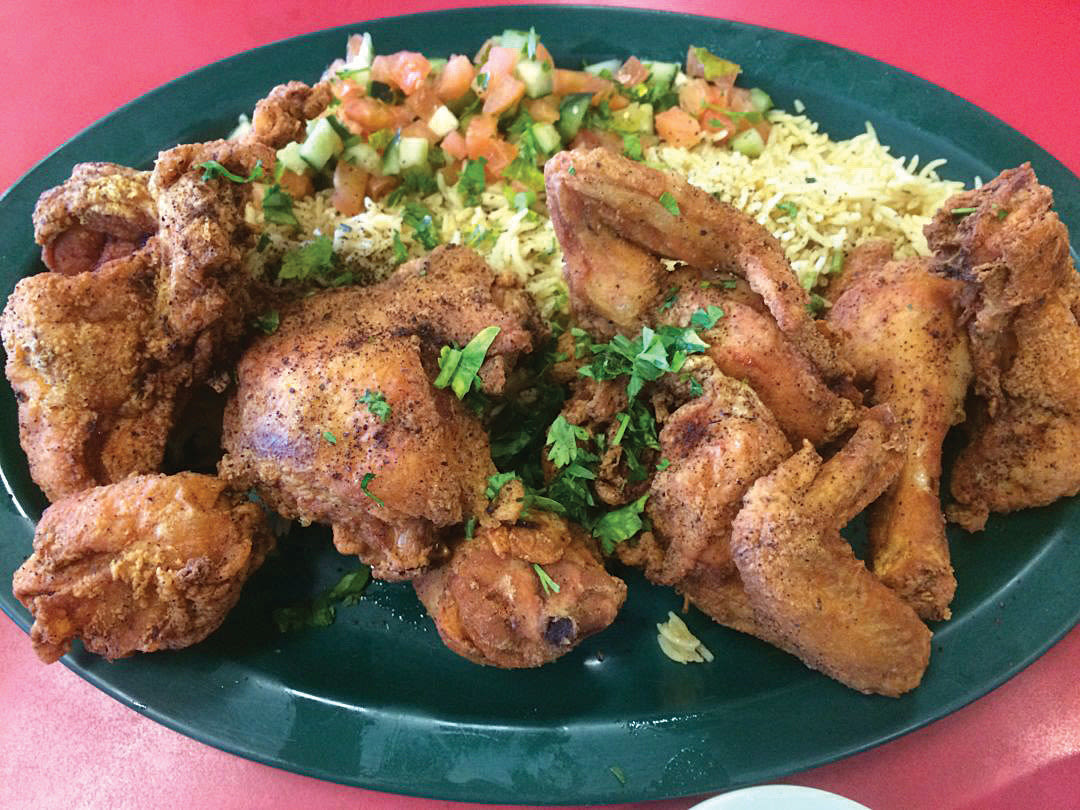
Fried chicken at Al Aseel
Image: Alice Levitt
I like to take in Houstonian culture in grand bursts, wandering the exhibits about early embalming practices at the National Museum of Funeral History, say, before a meal of Coca Cola wings at Big Sarg’s Soul Food off 1960 and 45. But I’m just as excited to try national and international chains when I can. I buy my Japanese candy with equal vigor at locally owned Nippan Daido and corporate Seiwa Market, both conveniently located in the Energy Corridor. Similarly, as much as I enjoy the city’s local ice cream, I’m excited to be able to enjoy my childhood favorite, Baskin Robbins, once again after a 17-year separation.
And strangely, that’s not the only way I’ve felt Houston has pushed me closer to my early years in the New York City suburbs. Upper Kirby feels strikingly similar to my hometown of Greenwich, Connecticut, but simply having access to clothing stores, upscale restaurants, and heck, even chain restaurants again has been eye-opening. Necessities to other people, like Target or IKEA, are still wacky adventures for me; after all, Vermont is the only state whose capital, Montpelier, refuses to allow a McDonald’s within the city.
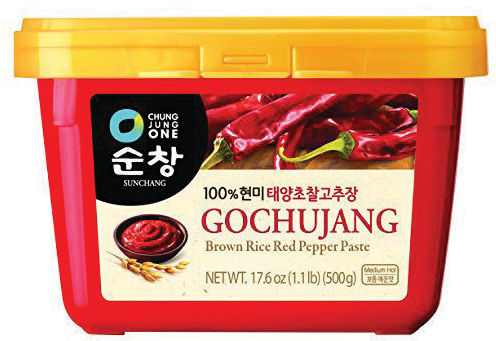
"There was a time not long ago that I had to travel across international borders to buy gochujang. Now I can get the red-chile paste whenever I want."
Image: Shutterstock
In the weeks after my move to the Bayou City, this new world came to seem a little less novel to me every day. As the seasons changed, I learned just how different Texas is from the northeast. During my first Houston February, my mind was blown by the local strawberries. In New England, they usually come into season in June. But it was in thinking about seasonality and the local food system that I started to see the major hole in Houston’s very impressive culinary game.
What’s lacking here is something I loved about Vermont: a glut of farms, each with a unique personality. The farm-to-table food system is alive and well in that tiny state, which afforded me unique opportunities, like interning as a nose-to-tail butcher. Even when I wasn’t arguing with my mentor about whether to cut country ribs or leave full-sized chops, I was getting to know my food on a first-name basis. I still get Facebook updates from my favorite family of Scottish Highland cattle.
I’m no hippie, but I like to know where my food comes from. It predicts both quality and health of the ingredients, not to mention ethics. But whereas the provenance of ingredients was listed with fanaticism in Vermont, at all but the most scrupulous Houston restaurants, I still find the staff doesn’t seem to know or care.
My oft-repeated nightmare scenario is asking a server to identify the cheese on the cheese plate that’s been presented to me. “Houston Dairymaids,” is the eternal answer. When I protest that that’s not a farm or even a type of cheese but a distributor, they typically go to the kitchen and ask the chef. “Houston Dairymaids,” they usually affirm. And even when foods are “local,” that often means they’re from 100 miles afield or more—light years in New England terms.
Fortunately, those food miles are dwindling. I do see more local farms mentioned on menus than I did when I first got here. And a few intrepid Houstonians are doing what they do best—innovating—to make farming work deep in the city. There's beautiful Finca Tres Robles and its farm dinners, and Plant It Forward Farm, which trains refugees to become urban farmers. And I’ve recently become a fan of Acre in a Box, a farm that grows hydroponic greens in two shipping containers smack in the middle of Midtown.
Anyway, if most sourcing remains sloppy, and restaurant recycling seemingly nonexistent, well, those are the only things I’m missing here, broadly speaking. I came to Houston for diversity, and I got it. There was a time not long ago that I had to travel across international borders to buy gochujang. Now I can get the red-chile paste whenever I want—not that I get to make my signature gochujang-rubbed beef ribs or my gochujang-almond butter dressing often. If I’m not dining out for work, I’m usually out socializing, something else I didn’t do much of up north. The convenience of living in a city that has practically everything I want is still novel—the feeling remains as if I’ve just been released from captivity. And I can gather friends for a bulgogi feast whenever I want.
But one thing I hope I’ll never do is take Houston’s dining for granted. There’s a world of eating here, much of it also world-class. And it’s just getting better.

